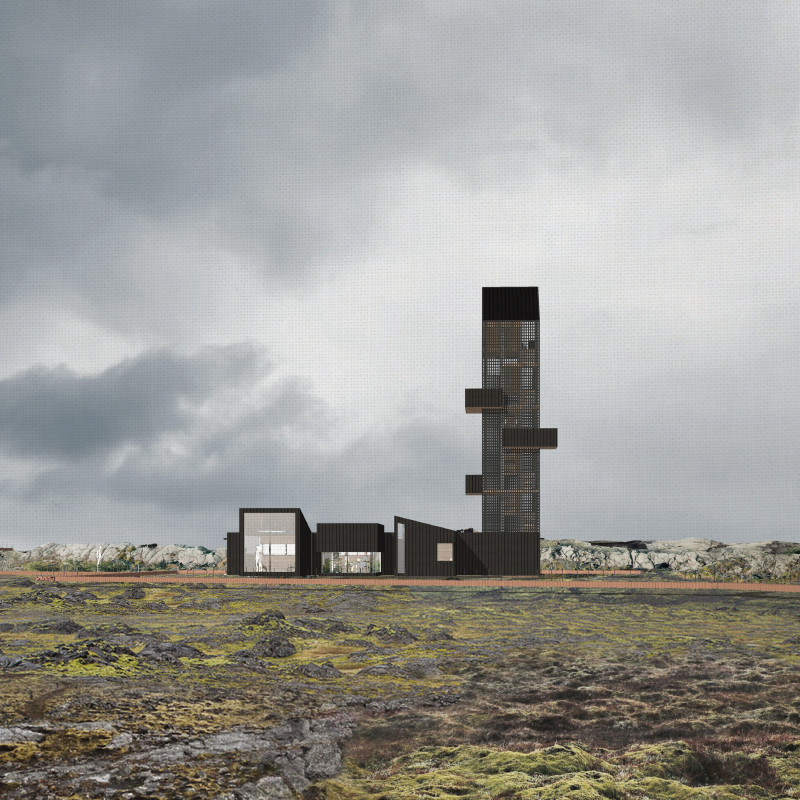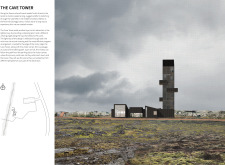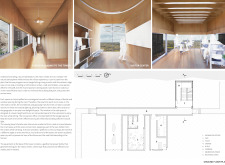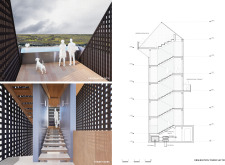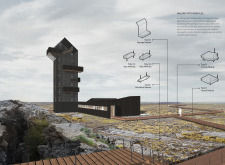5 key facts about this project
The Cave Tower is located along the tectonic divide between Eurasia and North America in Iceland, close to the Grjótagjá caves. The area is marked by rugged landforms and broad scenic views that attract many visitors. The design combines a visitor center with an observation tower, focusing on a compact structure that enhances the experience of those exploring the landscape.
Design Integration
-
The design captures the relationship between architecture and its natural surroundings. The visitor center and tower are arranged along a long corridor, linking important spaces such as an information center, café, public restrooms, a staff office, and the observation tower itself. This layout allows for optimal views of the tectonic ridge, encouraging visitors to connect with the geological features while they move through the area.
Visitor Experience
-
Guests begin their journey at the parking lot, following a path that leads them to the visitor center. This route creates anticipation, as visitors immerse themselves in the landscape. Inside, the different spaces provide varied perspectives and an insightful journey. The observation tower acts as a centerpiece, designed to create an interactive experience with wooden laths forming a screen. As visitors climb, views shift and reveal more of the surrounding scenic beauty.
Functional Spaces
-
The interior of the visitor center consists of rectangular volumes, each with unique facade shapes and window placements. This variety allows for distinct views from different rooms. The information center stands out with a roof that extends upward from the corridor, enhancing both natural light and visibility of the landscape. In contrast, the café features lower windows intended to provide a cozier atmosphere while still connecting patrons to the outdoor scenery.
Sustainability Measures
-
Integrating a geothermal power facility at the base of the observation tower highlights the use of local resources. This approach emphasizes functionality and eco-friendliness, reflecting Iceland's commitment to sustainable energy practices. By prioritizing the environment, the design minimizes its impact and operational costs.
The overall experience is enriched as visitors engage with the site's unique geology. Ascending to the observation platform reveals a wide vista, where the rugged beauty of the Icelandic terrain unfolds, inviting reflection on the relationship between nature and architecture.


